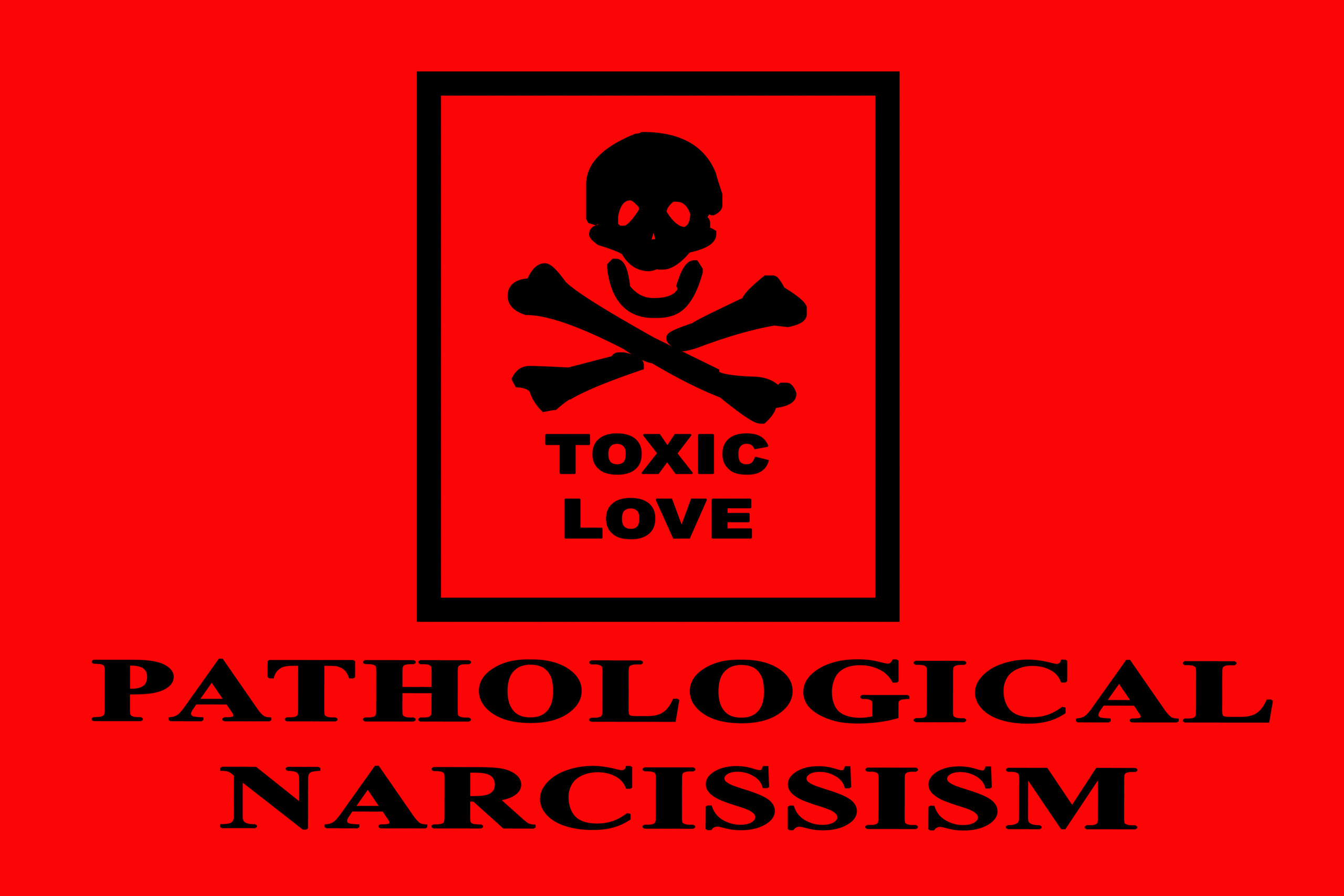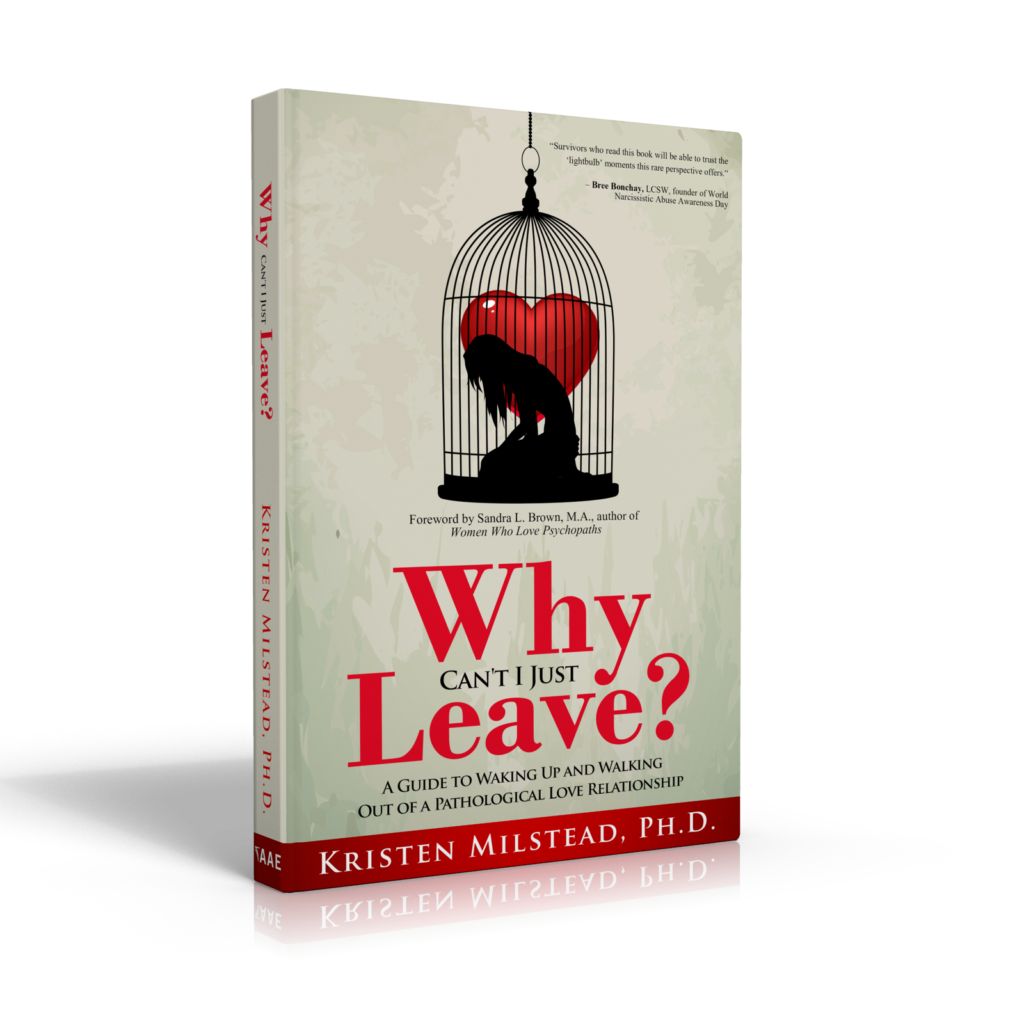Narcissistic abuse in relationships is notoriously difficult to define.
Because narcissists may engage in physical, sexual and financial abuse, victims may spend years recovering or rebuilding their lives psychologically at the same time they must also learn new ways to support themselves or save money after they have lost everything.
What is it about narcissistic abuse that sets it apart from the other forms of abuse? Why bother to carve out a separate space for it at all?
Narcissists are cruel. Narcissists can belittle, name-call, and shame. They fluctuate between “honeymoon periods” and “abusive periods.” They are often controlling and possessive, live double lives, and engage in serial cheating.
Their primary method of abuse is psychological.
But what is it about narcissistic abuse that makes it different than other forms of psychological abuse? Does it matter that it was perpetrated by someone in particular–that is, a narcissist?
Why Does the Definition for Narcissistic Abuse Matter?
Narcissistic abuse is a serious form of abuse that is estimated to affect somewhere between 60 and 158 million people in the U.S. alone (Bonchay, 2017). Despite its prevalence, however, almost no public knowledge exists about this type of abuse.
Most types of abuse, such as physical abuse and psychological abuse, have generally agreed-upon definitions.
Yet often the definitions supplied for narcissistic abuse written for survivors are vague.
I don’t intend this to be a criticism. The information that does exist served other purposes for me personally as I was trying to understand what had happened to me in my relationship.
It helped me to recognize that I was, in fact, being abused and to leave my relationship. It helped me to connect with other survivors, and it has helped me to continue to recover.
I owe a debt of gratitude to the many wonderful souls who have spent their time and lives educating and helping people who have been devastated by this type of abuse understand what has happened to them.
My hope is that we can bring cohesion to the definitions that exist in order to help victims and survivors receive more social and legal support. Right now, so few people understand what it is.
It also makes it a lot easier for narcissists to find targets because so little mainstream awareness of it exists.
What is Narcissistic Abuse?
When defining narcissistic abuse, sources often use descriptions of certain aspects of it. For example, some sources define it as a combination of tactics that are used by the perpetrator to abuse a partner (i.e., Lancer, 2017, et al.). The tactics include love-bombing, devaluing, discarding, smearing, hoovering, and others.
Other sources define narcissistic abuse by describing the symptoms in a survivor that he or she has been abused by a narcissist (i.e., Arabi, 2017, “11 Signs You’re the Victim of Narcissistic Abuse”). These include things such as struggling with health issues and walking on eggshells.
These types of descriptions have been extremely beneficial to millions of survivors around the world. Explanations such as these are crucial for those of us who struggled to survive relationships with conscienceless people who hijacked our desires and engaged in unspeakable acts.
If you are currently in or have come out of a relationship with a narcissist and are traumatized, these descriptions provide validation of experiences of a phenomenon that can feel otherwise irrational.
What the descriptions don’t do, however, is explain the essence of narcissistic abuse that holds together all of those abusive tactics. They also don’t explain why the abuse has the effects on us that it does.
In other words, the descriptions are too broad, touching on anything and everything that might occur within a relationship with a narcissist, and yet not all-encompassing enough to be actual definitions of narcissistic abuse.
Why These Definitions of Narcissistic Abuse in Relationships are Problematic
Imagine trying to explain to someone else who hasn’t been through it what narcissistic abuse is and rambling on about tactics and their effects. Perhaps, like me, you’ve done this very thing and found yourself getting lost in that explanation.
Because these descriptions are really only focusing on an aspect of the abuse (e.g., a tactic or a particular effect) and not the underpinning, they lack precision that can leave many things about the nature of the abuse unanswered.
For example, I can try describing some of the psychologically abusive tactics my ex-boyfriend used, such as putdowns, gaslighting, or the silent treatment. It then it raises questions about how the abuse is distinct from other psychologically abusive relationships. Why call it narcissistic abuse?
Or let’s say I bring up cheating as part of what occurred in the relationship. That may make him look like a jerk, but not necessarily an abuser–even when it occurred multiple times. What was the specific quality of the cheating that made it different in this particular relationship?
And how should we understand, much less explain to someone else why anyone would go to so much trouble to love-bomb someone only to rip the entire relationship to shreds months down the road? It doesn’t sound rational.
That’s the point– it’s not.
And what of the effects on us? How do we explain that we excused and hid the behavior, but now we have all of the horrible stories to tell?
There is a thread that ties all of this together, and yet it’s important to pull out what it is. Without it, we are still borrowing the narcissist’s crazy-making narrative to try to piece together what happened.
Instead, we could be flicking on the light to see how the magic trick was done.
Understanding Narcissistic Abuse Means Understanding Narcissism
We know and understand already how the magic trick was done. We just haven’t yet framed narcissistic abuse in a way that makes the “trick” the centerpiece of the abuse.
The National Domestic Violence Hotline website defines domestic violence as “a pattern of behaviors used by one partner to maintain power and control over another partner in an intimate relationship” (“What is Domestic Violence?” n.d.).
Linking narcissistic abuse in relationships back to what characterizes the perpetrators is the key to defining it. This is because it ultimately leads to identifying the specific action by which these abusers in particular gain control.
Although they may never be diagnosed, the perpetrators of narcissistic abuse are typically those whose behavior meets the criteria for one of two Cluster B Personality Disorders — Narcissistic Personality Disorder (NPD) or Anti-Social Personality Disorder (ASPD) (Arabi, 2017, “Why Survivors of Malignant Narcissists Don’t Get the Justice They Deserve”).
Individuals with these disorders have a strong propensity to exploit others. This is because they have low levels of emotional empathy. They also have an inability to feel remorse and the pathological ability to deceive and manipulate.
Although the typical cycle of abusive relationships includes “honeymoon periods,” (Walker, 1979), the cycle of narcissistic abuse in relationships is different. Narcissistic relationships instead have an idealization period.
During this period, narcissists intentionally manufacture a “soulmate” persona at the beginning of the relationship that is not who they genuinely are. They do this to encourage targeted partners to become vulnerable to them quickly and fall in love.
Once the narcissist has gained the trust and confidence of the partner, the “true self” of the narcissist eventually shows itself. The abuser turns on the partner and behaves in cruel ways. These can include verbal abuse, withholding the love and attention that was previously freely given and engaging in various forms of betrayal.
The “trick” is in the false self behind which the narcissist either hides or excuses his or her bad deeds.
The Key to Defining Narcissistic Abuse
It is only through the deception of the “false self” that any of the abuse can occur, and the deception is unique to narcissistic abuse. It is a particularly damaging feature, as it leads to cognitive dissonance and grieving over the person who does not exist by the victim.
Sandra L. Brown (2009) says in her book Women Who Love Psychopaths that intrusive thoughts and cognitive dissonance were the two most disruptive symptoms in the women she counseled who came out of relationships with psychopaths.
“This is why the mid-relationship dynamics are marked by grieving. What [the survivor] becomes acutely aware of is that her grieving is caused by a unique feature of the psychopath. This unique feature is the unbelievable contradictions, opposites, and dichotomies that mark this man as the disordered person he is.”
Narcissistic abuse at every stage is about deceit, a “false self.”
I propose that the definition of narcissistic abuse should have at its core the idea of intentional deception for the purposes of exploitation.
This can include misleading, lying, or creating misinformation about personal background, present actions, the self (i.e., tangible qualities such as occupation or intangible qualities such as likes and dislikes, etc.), or about future intentions.
All of these create a perception in the mind of the victim of a person that isn’t real. As a method of control, it meets the definition of abuse established by the National Domestic Violence Hotline website.
The mechanism of control is to break down someone’s psychological barriers. It is to subvert their warning systems and create vulnerability and trust. They then can control the other person and get that person to willingly provide whatever he or she wants.
A Working Definition for Narcissistic Abuse
A working definition might look something like this:
Narcissistic abuse is the intentional false construction of someone else’s reality by an abuser for the purposes of controlling them. It has the following features:
- They construct a false reality through elaborate, covert deception and psychological manipulation over a long period of time. This false reality is the presentation of a false self.
- The narcissist creates the false self by using background information, concocted thoughts and feelings, and lies about history, actions, and intent.
- All of the false information coheres into a persona of someone who has the survivor’s best interests at heart. This lulls the partner into a false sense of security.
- The goal is to allow the narcissist to extract whatever he or she perceives is of value from the partner. This can include attention, admiration, status, love, sex, money, basic needs such as a place to stay, or other resources.
- The abuser takes advantage of societal norms that assume everyone participates in social relationships with a basic level of empathy. This makes it easy for narcissists to convince their partners that they are the people that they present themselves as.
- Because the abuse is “hidden” using deception, survivors have a difficult time recognizing it.
- Even after they do recognize it, the false self/true self dichotomy creates a powerful trauma bond that simulates Stockholm Syndrome for victims, who suffer from severe cognitive dissonance over the abuser’s split actions. The abusive nature of falsely constructing another reality
Traditional abusers control through more traditional means. These include the infliction of bodily harm, lowering someone’s self-esteem through verbal abuse, and controlling resources to keep someone dependent on them.
Narcissists may do these things as well–but they, first and foremost, control the perception of the victim’s reality and take charge of the partner’s mind.
Let’s Look at Some Examples
In the plots of several memoirs written by survivors of narcissistic abuse, a theme emerges.
A Beautiful Terrible Thing
- In alternating Before and After chapters, Waite obsessively analyzes her relationship, trying to find a single moment form the past five years that isn’t part of the long con of lies and manipulation. Instead, she finds more lies, infidelity, and betrayal than she could have imagined. With the pacing and twists of a psychological thriller, A Beautiful, Terrible Thing looks at how a fairy tale can become a nightmare and what happens when “it could never happen to me” actually does. (A Beautiful, Terrible Thing, Jen Waite)
The Bigamist
- In April 2006, Mary Turner Thomson received a call that blew her life apart. The woman on the other end of the line told her that Will Jordan, Mary’s husband and the father of her two younger children, had been married to her for fourteen years and they had five children together. The Bigamist is the shocking true story of how one man manipulated an intelligent, independent woman, conning her out of £200,000 and leaving her to bring up the children he claimed he could never have. It’s a story we all think could never happen to us, but this shameless con man has been doing the same thing to various other women for at least 27 years, spinning a tangled web of lies and deceit to cover his tracks. (The Bigamist, Mary Turner Thompson)
Divorcing a Narcissist
- Tina Swithin was swept off her feet by a modern day Prince Charming and married him one year later. Tina soon discovered that there was something seriously wrong with her fairytale. The marriage was filled with lies, deception, fraud and many tears. Tina was left in an utter state of confusion. This wasn’t the man that she married…or was it? Tina first heard the term, Narcissistic Personality Disorder from her therapist in 2008 but quickly dismissed the notion that something could be wrong with her husband. It took several years for Tina to begin researching the disorder and suddenly, the past ten years of her life made complete sense. Tina soon discovered that there is only one thing more difficult than being married to a narcissist and that is divorcing a narcissist. (Divorcing a Narcissist, Tina Swithin)
The Secret Life of Captain X
- Her marriage to successful airline pilot Captain X seemed like a dream come true. In reality, it was a nightmare. From the second they met, Captain X swept MrsXNomore off her feet, constantly showering her with gifts, flattery and attention. Early on she underwent the physical and emotional stress of infertility and adoption with little help from her husband. Things were not adding up. His erratic work schedule, their few friends, distant family, and his evasiveness about finances left MrsXNomore in a constant state of confusion. Insisting on reviewing family finances, disbelief set in. Captain X had plunged them into serious debt, often using her name, ruining her credit. Shocked, she constantly searched for answers and found them in Captain X’s computer. She discovered he was member of a secret brotherhood involving prostitution, locally and internationally during their entire marriage. (The Secret Life of Captain X: My Life with a Psychopathic Pilot, Mrs. XNoMore)
Web of Lies
- Web of Lies takes you on an emotional roller-coaster, experienced through the eyes of Sarah Tate, an intelligent, young newcomer to Switzerland who is swept off her feet by an older, more experienced company manager. Within weeks of their meeting, Bill impresses her with a courtship vastly unusual in modern times. He lures Sarah with his intellect along with numerous gifts, expensive restaurants, and trips to luxury hotels. Sarah, who is searching for not only love but security, quickly finds herself falling for the worldly but sensitive and caring man Bill represents himself to be. In Web of Lies, she describes the highs and the lows of what it is like to be involved with a person with Narcissistic Personality Disorder, how to come to terms with the abuse, and most importantly, how to escape. (Web of Lies, Sarah Tate)
What is the Common Denominator in the Stories?
In each of these stories, the partners of the narcissist were lured into the relationships by the narcissist’s desirable persona. The person was so real that they were drawn into that reality and they established a life with that person. Years later, that foundation was shattered when the partners discovered shocking, secret behavior.
The details of the secrets and the behavior may have varied, but the systematic pattern is the same. The common denominator is deception.
The dual personas provide a framework for understanding the variety of tactics used by narcissists, such as love-bombing and devaluation.
They can explain concepts such as trauma bonding, identity erosion, and cognitive dissonance that demonstrate what happens to the partner over time and why he or she doesn’t leave.
The false selves also explain the seemingly contradictory and irrational behavior of the narcissist. They demonstrate that he or she is operating on a completely different moral system.
Focusing on “deception” as the key to understanding narcissistic abuse brings the very thing that makes the abuse possible out into the light.
Why “Deception” is the Key to Understanding Narcissistic Abuse in Relationships
It may be easy to say, “So what? We know that we were abused. It doesn’t matter if we have the right words to name what happened.”
Yet without words, we can’t call it out. Partners are often blamed for the abuse. They are re-victimized by the court system when divorcing or attempting to retain custody of children.
They may even be re-victimized by therapists when the narcissist is able to use deception to fool other people. The lack of understanding that deception is how narcissists abuse their partners is a part of the problem.
Although narcissistic abusers may also abuse in other ways, they rely on deception. The deception helps them to execute their dominance and control, to maintain it, and to avoid being detected as abusers.
This is itself abusive and should be recognized as such. By making it the heart of the definition of narcissistic abuse, it renders the darkness that cloaks their actions a little bit lighter.
References
Arabi, S. (2017). Why Survivors of Malignant Narcissists Don’t Get the Justice They Deserve. The Huffington Post. Retrieved on June 28, 2018, from https://www.huffingtonpost.com/entry/why-survivors-of-malignant-narcissists-dont-get-the_us_59691504e4b06a2c8edb462e
Arabi, S. (2017). 11 Signs You’re the Victim of Narcissistic Abuse. Psych Central. Retrieved on June 27, 2018, from https://blogs.psychcentral.com/recovering-narcissist/2017/08/11-signs-youre-the-victim-of-narcissistic-abuse/
Bonchay, B. (2017). Narcissistic Abuse Affects Over 158 Million People in the U.S. Psych Central. Retrieved on June 18, 2018, from https://psychcentral.com/lib/narcissistic-abuse-affects-over-158-million-people-in-the-u-s/
Brown, S. (2009) Women Who Love Psychopaths. Minneapolis, MN: Book Printing Revolution.
Lancer, D. (2017). How to Spot Narcissistic Abuse. Psychology Today. Retrieved on June 18, 2018, fromhttps://www.psychologytoday.com/us/blog/toxic-relationships/201709/how-spot-narcissistic-abuse
Walker, L. (1979) The Battered Woman. New York: Harper and Row.
“What is Domestic Violence?” (n.d.) The National Domestic Violence Hotline. Retrieved on June 25, 2018, from http://www.thehotline.org/is-this-abuse/abuse-defined/
A version of this article appeared online at PsychCentral.
Want more? Get more articles like this one delivered straight to your inbox.
Don’t forget to check out these free resources:
- Taking Your Life Back After a Relationship With a Narcissist – Recovery Toolkit
- Comprehensive Narcissistic Abuse Dictionary
- The Best Resources for Narcissistic Abuse Recovery






7 Comments
Kristen Milstead
Hi Katherine: You are so welcome. It is truly my pleasure. Thank you for taking the time to leave a comment. I am glad that you are finding the information so helpful. -Kristen
Desarae S
I definitely identify with this issue. I’ve been married 3 years , together for five with my narcissist. We actually haven’t lived together for nearly two years after he kicked me out and went to my ex with horrific stories of how I was neglecting my children. (All untrue). I’m still dealing with legal and custody issues. My family just sees him as a ‘jerk’ and ‘crazy’, but nobody really understands what I’ve gone through and am still dealing with. My family is angry with me for not cutting him out of my life completely. This man has ruined me financially, I lost my job, battling to keep my kids, depressed beyond anything I’ve ever experienced in my 40 years, and have nobody to talk to. Nobody can empathize with me, while I take care of all around me. Sometimes it seems my purpose is to do for others until there is nothing left of me. I don’t know how to break out of my situation as my debt grows and I’m looking at homelessness and basically complete life failure
Kristen Milstead
Hi Desarae: I am so sorry for what you are going through. You are not a failure because others have chosen to exploit you. There are times it feels as if we will never dig ourselves out. I’m glad you have your family. Thank you for being brave enough to share parts of your story. You are not alone. Please stay strong! -Kristen
Jen
I’m with ya, lady. I gave up everything to get the narc out of my life, so I would have nothing he wanted. It worked.
I’m also basically homeless, but neither you nor I will ever be a complete failure. You do what you have to do to cut the cancer out of your life. . .your children will never leave you. You’re doing them a favor. And they will respect you for it.
Don’t worry about anybody else, just do you.
Katherine Wobst
I have not yet read this article in it’s entirety, (bleary eyes with too much computer screen) but I read the first part and skimmed over the rest, stopping to read things that caught my attention. This, by far, is the best description of the relationship between a ‘normal’ person and a narcissist. I will read the rest in sections because so much applies to my ex-narcissist’s behavior and as I continue recovery, I am always finding new things that fit this man perfectly. Although I am not interested in another relationship with anybody, this is valuable information to know when interacting on any level with another parson. I have also recommended your page to a couple of my friends who went through the same hell as me. I am also hoping your wisdom will help one of my friends currently in a very rocky relationship with a narcissist. Thank you for sharing with the world!
Kate W
Excellent read. So true. When we try to explain the behaviors etc. it often begins sounding petty and paranoid. Thanks for recognizing it is in the shadows- and working to get the word out and put this behavior out in the open. Also however please note that women are just as possibly abusers! And gay people experience this too!
Shine a light for us! We never feel the abusers get “caught “ because they are such master deceivers! And people just don’t believe these folks exist in their own lives and families!
Kristen Milstead
Hi Kate: You are welcome. Thank you for reading! As a note, I am usually careful in each article to take time to be gender neutral. I thought I had done that here, and I apologize if I missed something. I do believe in using the actual genders when using someone’s real experiences, however, so you will likely see me doing that in those cases. I thank you for pointing out this very important point. -Kristen